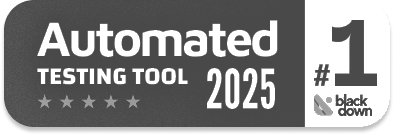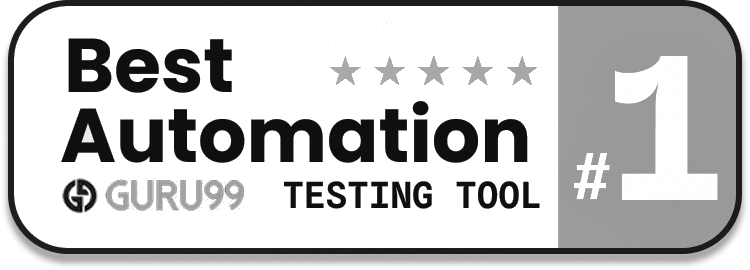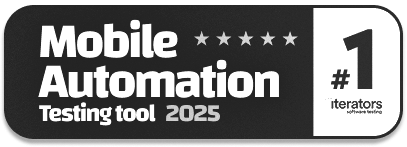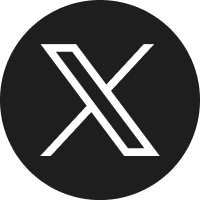Continuous Learning in Software Engineering: A Practical Guide
|
|
Heraclitus once said, “The only constant in life is change…”
Well, the only thing that is constant in the dynamic world of software engineering is change as well. To maintain efficiency, engineers must stay up to date on the innovative and emerging frameworks, new programming languages, and radical changes like cloud-native development and artificial intelligence. This converts lifelong learning into a professional need rather than just a suggestion.
This blog aims to explain the function of continuous learning in software engineering, its importance, its practical application, and the various ways in which new resources and tools can support this process.
| Key Takeaways: |
|---|
|
Importance of Continuous Learning in Software Engineering
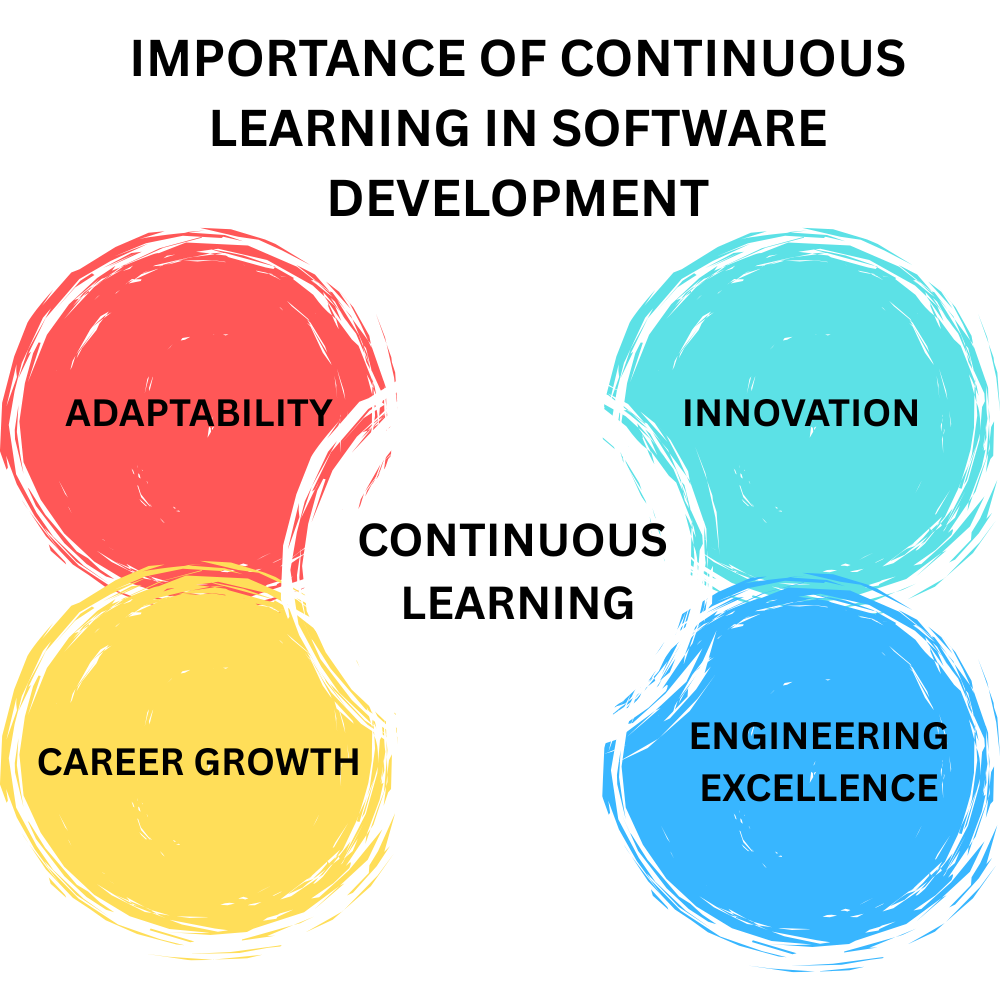
The software industry is always evolving. Libraries, new tools, and best practices are constantly being updated. This also means that knowledge from the past may have become obsolete in the future for software engineers. The following points explain why it is vital to practice continuous learning:
- Adaptability: Teams often switch between tech stacks as per the industry standards, scalability, or performance. Engineers can become immediate contributors by rapidly adapting to the latest tools and frameworks. This flexibility is needed to avoid stagnation or reliance on obsolete technologies.
- Innovation: Engineers can analyze differently, find more efficient methods to develop systems, and identify innovative solutions to challenging issues when they are introduced to new concepts, methods, and strategies. Breakthroughs can be achieved by keeping pace with innovations such as serverless architecture, edge computing, and AI-empowered development tools.
- Career Development: Gaining skills and expertise in new tech domains like AI/ML, blockchain, or cloud-native development provides access to senior designations, leadership positions, and consulting opportunities. Courses and proof of learning initiatives improve one’s resume as well.
- Engineering Excellence: Consistent learning generally helps write optimized code, adheres to best practices, and makes contributions more meaningfully to conversations related to scalability, reliability, and maintainability. These characteristics boost the user experience and holistic product quality.
Organizations with a continuous learning culture are more likely to innovate at a faster pace, retain their top talent for a longer period, and build engineering organizations that are more resilient.
The Role of Continuous Learning in Software Engineering
Apart from learning new frameworks and software languages, ongoing education plays a major role in a developer’s career. Learning soft skills, understanding software design patterns, enhancing systems architecture, and adapting to cultural shifts such as Agile and DevOps are important components of the journey. Continuous learning helps in:
Skills Sustainability: In the fast-evolving world of technology, your existing knowledge falls short of the demands in the future. By improving their toolkit and problem-solving capabilities, engineers can prove their relevance via continuous learning.
Team Synergy: Backend, frontend, DevOps, and QA teams work together more effectively and with increased empathy when cross-functional learning is put in place. Communication flows more smoothly and offers improved results when different domains are clearly understood.
Customer Focus: Engineers can make sure that software provides real value by better aligning their work with customer needs by gaining knowledge through product management, business metrics, and user experience.
Engineering Leadership: Those who practice continuous learning often grow into mentors, advocates of best practices, and strategic thinkers who direct groups towards assured growth and success.
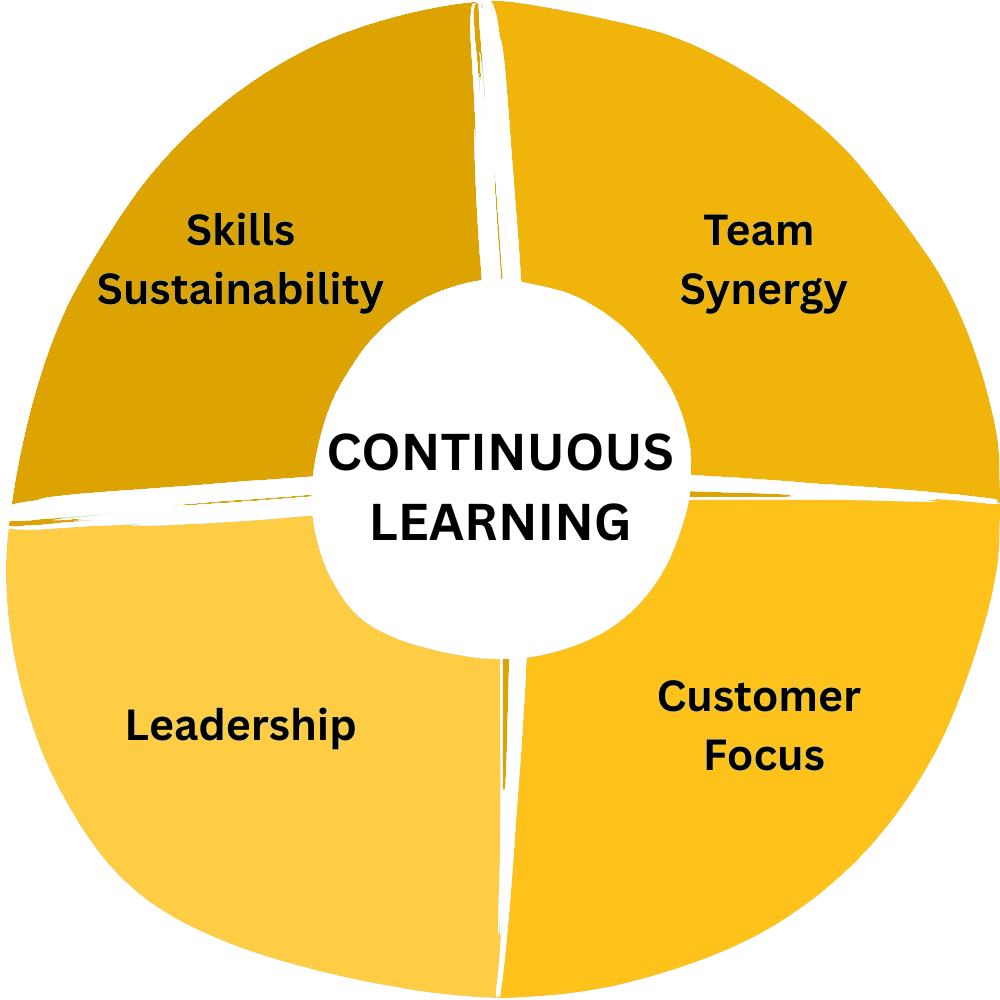
The philosophy of continuous improvement, which is centered on improving both the processes and the code that generates it, is supported by continuous learning. It is common in Agile and DevOps settings and consists of practices such as:
- CI/CD pipelines: Shortening release cycles by automating deployments.
- Retrospectives: Use past experiences to encourage team-level development.
- Quality gates: Making sure that only code of the highest quality progresses.
- DevOps metrics: Development effectiveness can be viewed through DORA metrics. These metrics are defined as deployment, frequency, lead time etc.
Mature engineering teams are well-known for their capability to learn from these metrics and transform their procedures accordingly.
Impact of Continuous Learning in Software Engineering
Continuous learning has a multi-dimensional effect. It has a significant impact on organizations, teams, codebases, and ultimately the end-user experience, along with the individual learner. The following are some vital areas where continuous learning has a valuable impact:
- Improved Code Quality and Architecture: Code written by engineers who are always up-skilling tends to be cleaner and easier to maintain. They are most likely to avoid anti-patterns, refactor early on, implement design patterns efficiently, and have a high Quality Engineering Score. Systems become more durable and scalable as a direct result.
- Faster Resolution of Defects: Engineers build a mental library of techniques by continuously handling a range of issues and their solutions. An experienced and knowledgeable engineer can resolve issues far more rapidly than someone who depends only on trial and error. This is regardless of whether they are optimizing a slow query or repairing a memory leak.
- Higher Team Productivity: Collaboration increases when team members are experienced with existing tools and best practices. During the development cycle, friction, frustration and misunderstandings are drastically reduced when methodologies (such as TDD, BDD, or CI/CD) are accepted by all parties. Read: What is Test Driven Development? TDD vs. BDD vs. SDD.
- Improved Technology Adoption: Teams that emphasize continuous learning are less likely to be against adapting to change. Such teams are better equipped to adjust when a new library, tool, or architecture is bought in. Both major enterprises and startups will find this agility to be a critical competitive edge.
- Enhanced Mentoring and Onboarding: Skilled engineers who never stop learning often assume the role of unofficial mentors. They can more successfully onboard junior engineers all due to their learning mindset, which facilitates them to offer relevant advice on learning techniques along with accurate coding.
- Increased Creativity: Experimentation is encouraged by experiencing new technologies, architectures, and approaches. A learning culture supports experimentation, which can lead to new product development, process improvement, or both.
- Higher Retention and Job Satisfaction: Engineers are happier and less prone to quit if they believe they are growing in their position. Attrition is both down and a positive work setting is built by offering learning opportunities and encouraging personal development.
- Impact on Business Value and Customer Experience: Continuous learning entails improved results such as better user experiences, rapid releases, and higher-quality products. Reduced time-to-market, lesser production errors, and happier customers are the benefits enjoyed by the organization.
Principles of Continuous Learning for Software Engineers
Obtaining an understanding of the basics of continuous learning can enhance its sustainability and meaning.
- Intentionality Over Volume: Prioritize continuous learning extensively rather than learning only at the surface level. Have a particular goal in mind: Do you wish to have a better understanding of microservices? Master Python to become an expert in data engineering. Intentional learning increases ROI and is aligned with career objectives.
- Practical Experience: While theory is critical, practical experience is the secret to true learning. Developing a side project, contributing to an open-source project, or replicating a complex system are all instances of how hands-on experience builds deeper understanding and muscle memory.
- Peer Collaboration: Isolated learning can be frustrating, slow, and discouraging. Peer communication, whether in the form of study groups, in-person learning sessions, or online forums, encourages growth and provides a range of POVs. Multiple opportunities for cooperation and collaboration are offered by platforms such as GitHub and Stack Overflow.
- Feedback and Reflection: Progress is hard to measure without feedback. Frequent feedback, code reviews and journalling of your learning process can result in key information about sectors that need improvement.
- Consistency Over Intensity: Burnout is a real thing, and exhausting. Establish a long-lasting habit rather than trying to learn everything in a single weekend. Mere 30 minutes a day of focused learning over time can cause valuable advancements.
How to do Continuous Learning as a Software Engineer
- Define learning goals: Make use of SMART (Specific, Measurable, Achievable, Relevant, Time-Bound) goals. For example:
- In three weeks, learn the basics of React.
- By the following quarter, complete a full-stack project using Django and Vue.js.
- Within six months, clear your certification exam as an AWS Solutions Architect.
These goals offer clear direction and motivation.
- Collate Reliable Sources: Stay clear of resource overload, and follow only relevant information.
- Blogs: testRigor, Dev.to, Martin Fowler.
- Newsletters: JavaScript Weekly and ByteByteGo.
- Online learning platforms: Udemy, Pluralsight, and Coursera.
- Communities: Channels on Discord, Hashnode, and Reddit.
Consistency is achieved by choosing two to three key sources and adhering to them.
- Build and Break Projects: To gain knowledge about system boundaries, you can clone apps, replicate well-known systems such as Hacker News or Trello, or even break your own applications. Your understanding is improved by this method of exploratory learning.
- Take Part in Code Reviews: You can learn more about new techniques and sharpen your skills by reading other people’s code. Actively participate in PR reviews, understand the rationale behind each modification, and don’t be reluctant to ask any queries.
- Thoroughly Document your Learning: Build a personal blog, append to an internal company knowledge base, or publish weekly learning summaries on LinkedIn. One of the best and fool-proof ways to absorb information is to teach others.
- Take Part in Webinars and Conferences: Exposure to real-world case studies, upcoming trends, and hands-on workshops is offered by events like TestBash, AWS re:Invent, and KubeCon.
Strategies to Implement Continuous Learning in Software Engineering Teams
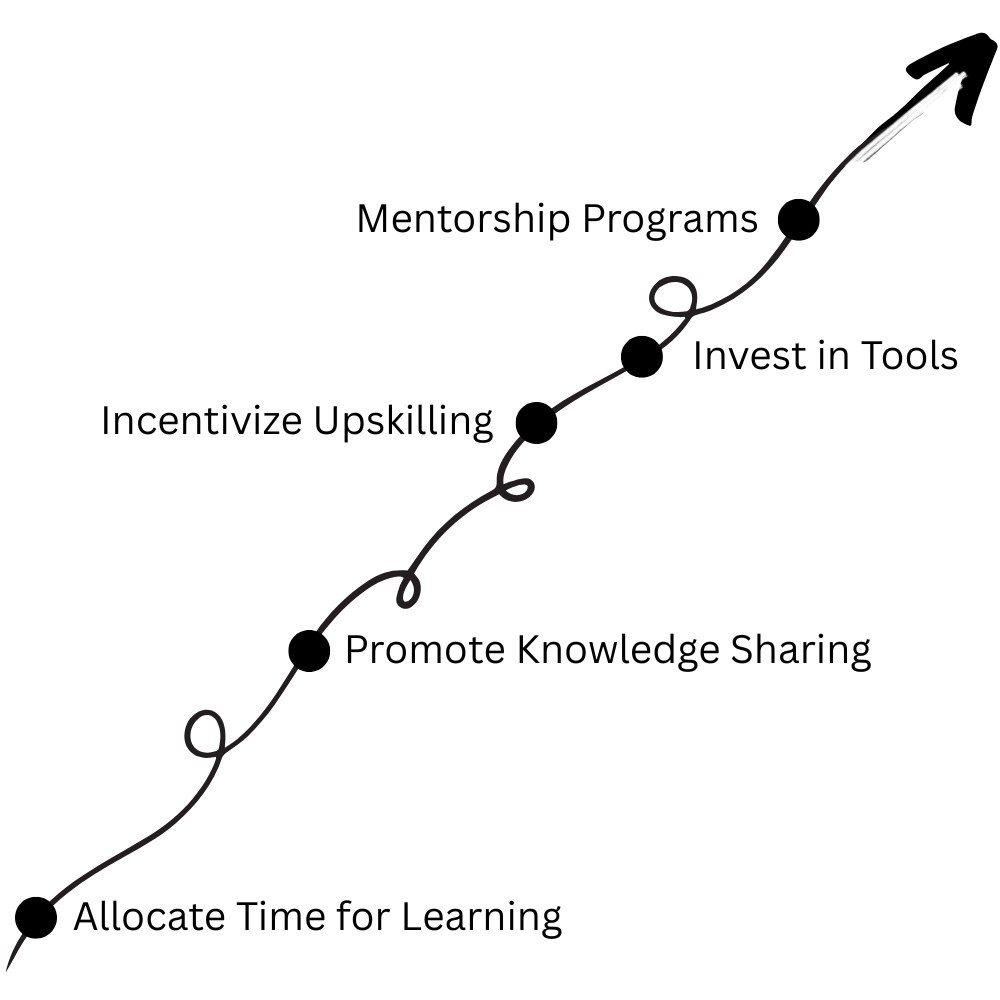
Continuous learning needs structure and support right at the organizational level. Here are some of the tried and tested, successful tactics:
- Set aside dedicated time to learn. Urge engineers to schedule learning time on their calendars. Hackathons held every fortnight or weekly “Learning Fridays” can be fantastic sources of motivation.
- Promote the regular exchange of knowledge. Collaborative documentation projects, internal tech discussions, and book clubs can all encourage a mentoring and sharing culture. Peer training enhances retention.
- Incentivize upskilling via rewards. Give credit for completing classes or earning certifications. Reward learning achievements with promotions or bonuses. Celebrate learning victories in town halls.
- Invest in relevant tools. Buy technical books, purchase team licenses to learning platforms, and utilize tools that make learning less complicated and easier. testRigor is one such tool that helps engineers practice generative AI-powered automated testing and learn high-leverage skills while bringing down technical debt.
- Implement mentoring programs. Through code reviews, pair programming, and structured one-on-ones, senior and experienced developers can direct junior developers. Mentoring encourages proportionate knowledge transfer and accelerates onboarding.
Challenges in Continuous Learning for Software Engineers
- Time Restrictions: Deadlines and meetings can interfere with learning time. It’s vital to integrate learning into regular tasks, for instance, read a blog post during a recess or utilize new tools while working on actual issues.
- Information Overload: Every day, thousands of new tech posts are created. Build a learning plan or guide that aligns with your current goals and examine it from time to time to optimize it.
- Lack of Motivation: Learning can feel unfulfilling or lonely. To stay enthusiastic, establish goals, acknowledge minor wins, and look for a support system or mentor.
- Burnout: It is inefficient to burn the candle at both ends in order to meet the professional demands and personal learning goals. Embrace a sustainable pace.
How testRigor Supports Continuous Learning and Improvement
Software testing is one of the most vital components where visible development impact and continuous learning meet. Traditional test automation has a sluggish onboarding process, a high maintenance overhead, and a steep learning curve. testRigor offers transformative value in this scenario.
Why testRigor?
Utilize Natural Language Scripting to Improve Learning
New team members or junior engineers, non-technical staff, can contribute to test cases in simple English. This frees up the engineers to focus on high-value technical learning by reducing the onboarding time and removing the need to get acquainted with complex testing frameworks such as Appium or Selenium.
Reduced the Need for Maintenance
One of the biggest time wasters in DevOps and QA is test maintenance. testRigor makes sure that tests maintain their relevance without regular rewrites by automatically adapting to UI modifications. You can utilize this reclaimed time to gain knowledge about architecture, infrastructure, or performance optimization.
Accelerate Feedback Loops and Continuous Deployment
testRigor provides immediate feedback via a seamless integration with CI/CD pipelines. Engineers are able to analyze the effects of their changes almost instantly. This instant feedback promotes learning from both setbacks and achievements.
Promotes a Cross-Functional Collaboration Culture
testRigor’s true no-code features makes it feasible for QA analysts, product managers, and even non-technical stakeholders to get engaged in the development and understanding of tests. The product team’s shared learning is enhanced, and silos are crushed. Read: All-Inclusive Guide to Test Case Creation in testRigor.
Conclusion
The top software engineers are not those with years of experience, it is those who never stop learning. Continuous learning is a survival skill, not a luxury, in a field where change is the only constant. There are multiple opportunities for growth, right from realizing the value of continuous learning in software development. These promote the principles of sustainability and depth and use tools such as testRigor to reduce friction and drive experimentation.
Learn a little. Apply a little. Reflect. Repeat.
| Achieve More Than 90% Test Automation | |
| Step by Step Walkthroughs and Help | |
| 14 Day Free Trial, Cancel Anytime |



